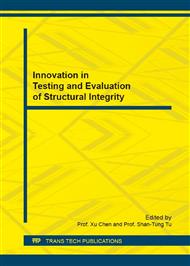p.187
p.192
p.197
p.204
p.209
p.216
p.221
p.226
p.231
The Mitigation of Weld Residual Stress on 304L Stainless Steel by Post Weld Cool Treatment Process
Abstract:
The High Welding Residual Stress is the Main Factors Affecting the Service Life of Welded Structures. Post Weld Cool Treatment (PWCT) is a Novel Method by Introducing Reverse Process Welding Temperature Field to Eliminate the Residual Stress and to Obtain Compressive Stress Layer. the Major Factors Affecting the Effects of Post Weld Cool Treatment (PWCT) is Preheating Temperature, Cooling Time and Cooling Range. in this Paper, a Model to Calculate the Residual Stress was Built Using Finite Element Code ABAQUS, and Different PWCT Processes were Applied on 304L Stainless Steel Specimens. at the same Time, Impact Indentation Method (IIM) was Used to Measure the Residual Stress on the Specimens. the Results Show that the Longitudinal Stress and the Transverse Stress were Reduced Obviously and Compressive Stress was Generated after PWCT in both of the Simulation and the Experiment. the Proposal Preheating Temperature was 400°C and the Cooling Range was 2 Times of Weld Width. Besides, the Cooling Time had Little Effect on the Residual Stress.
Info:
Periodical:
Pages:
209-215
Citation:
Online since:
September 2016
Authors:
Price:
Сopyright:
© 2017 Trans Tech Publications Ltd. All Rights Reserved
Share:
Citation:


